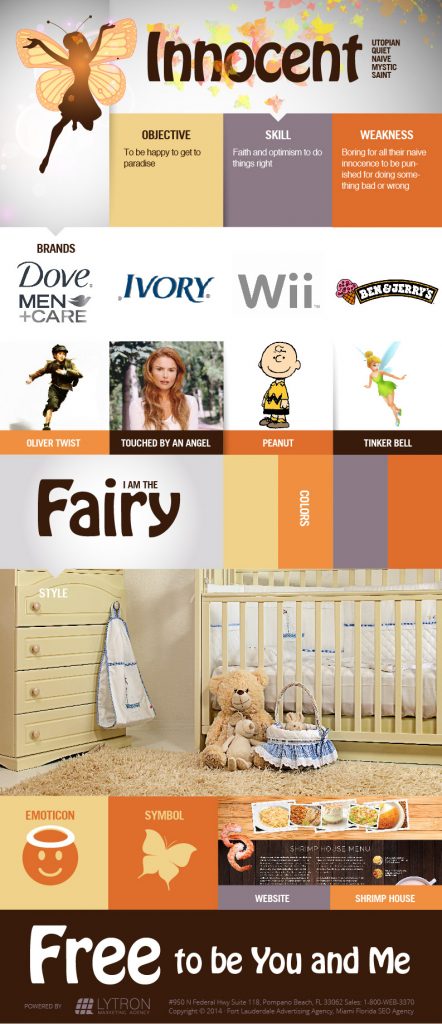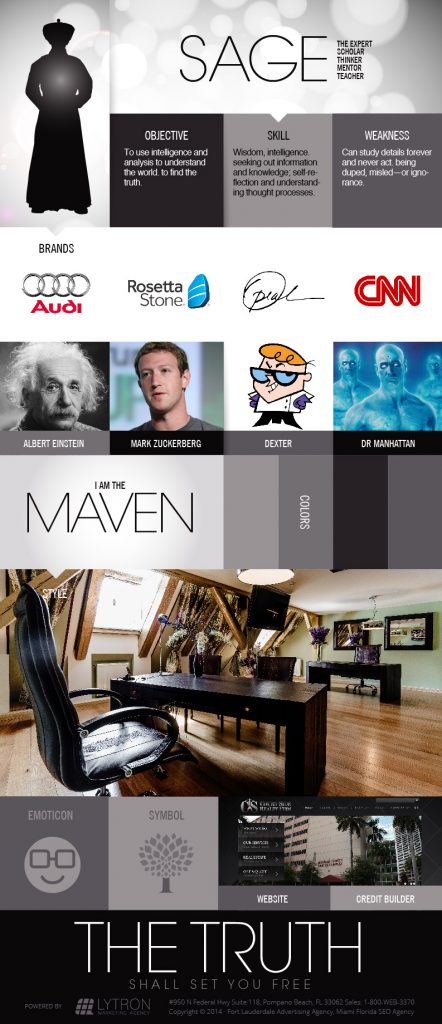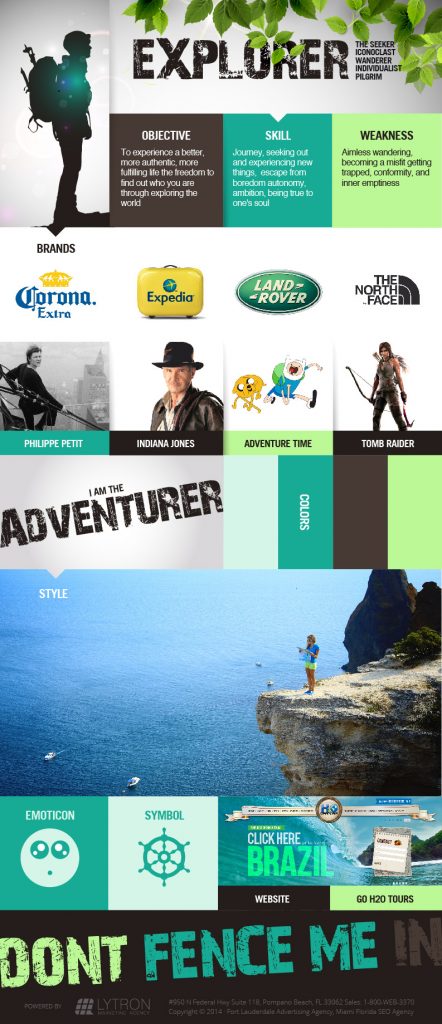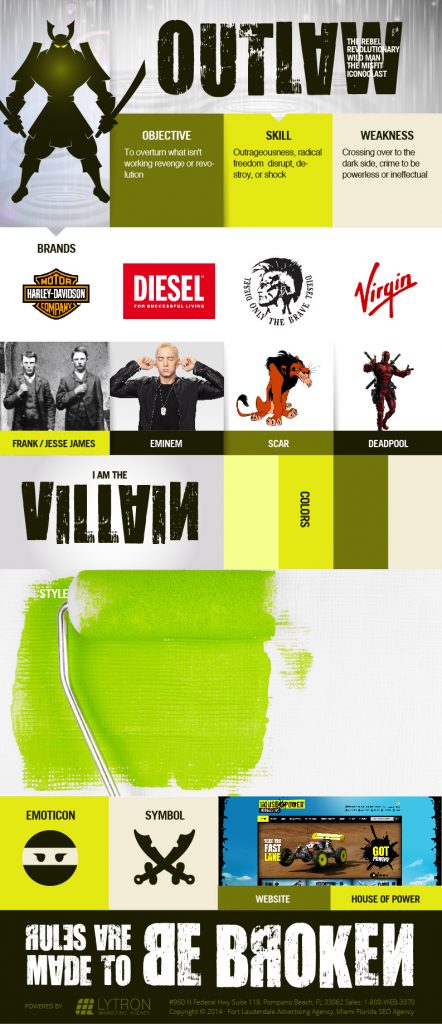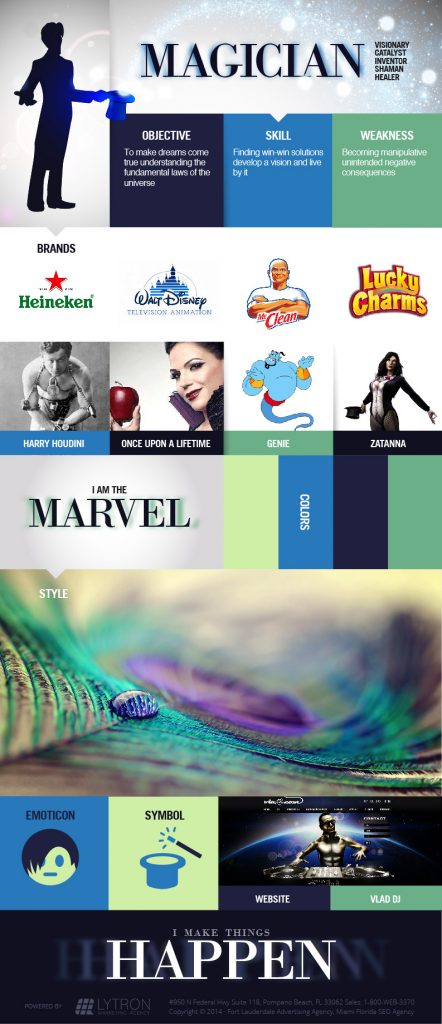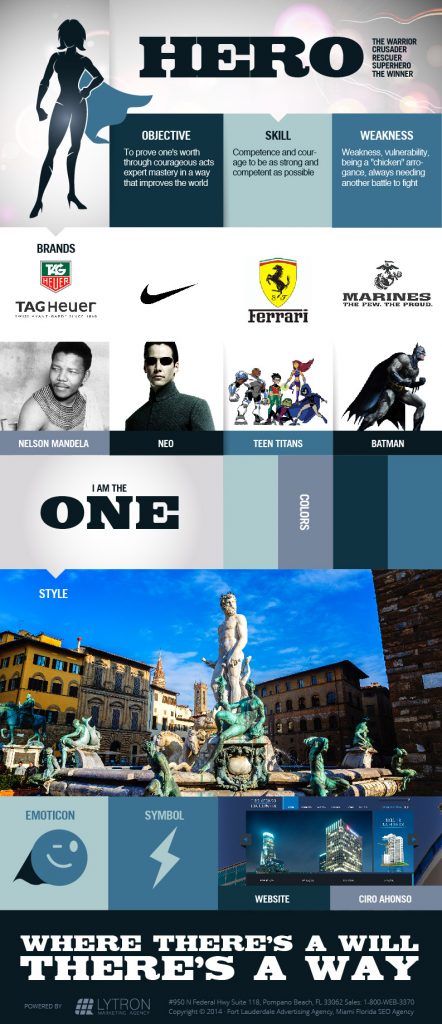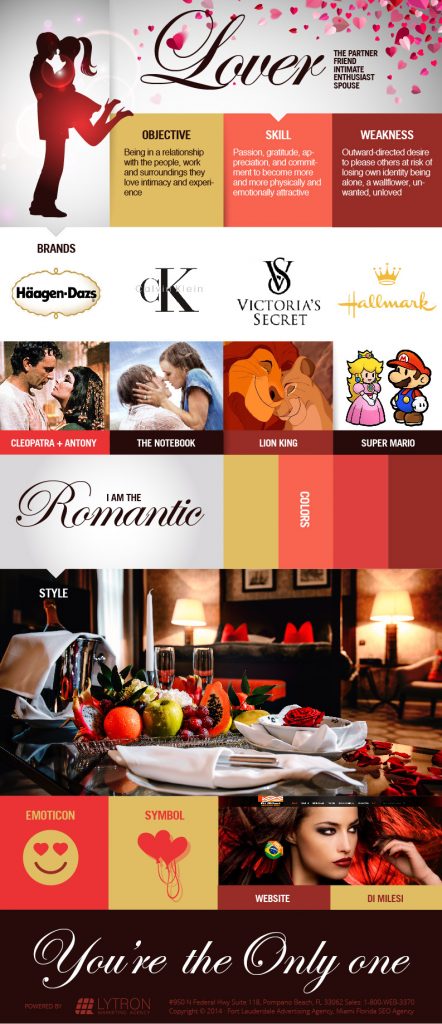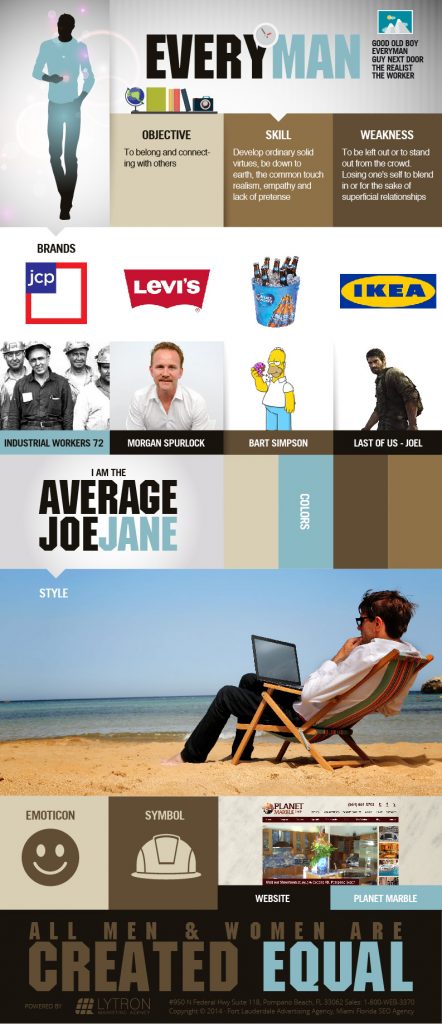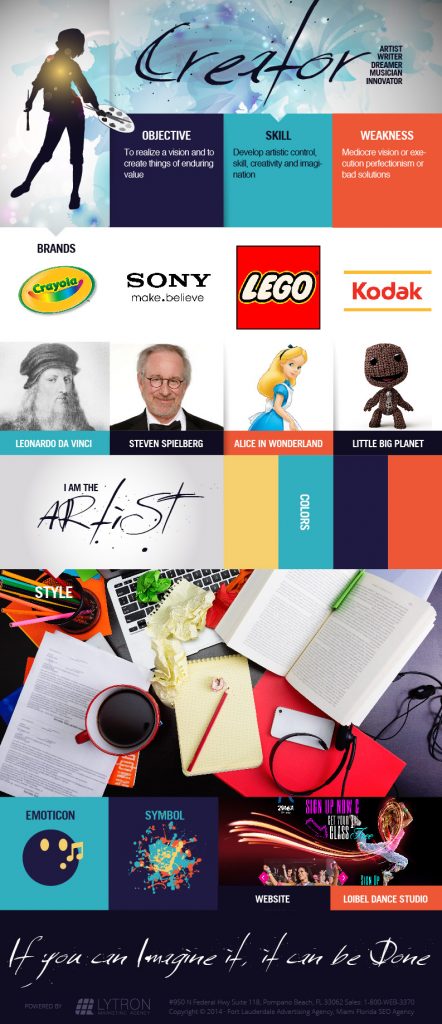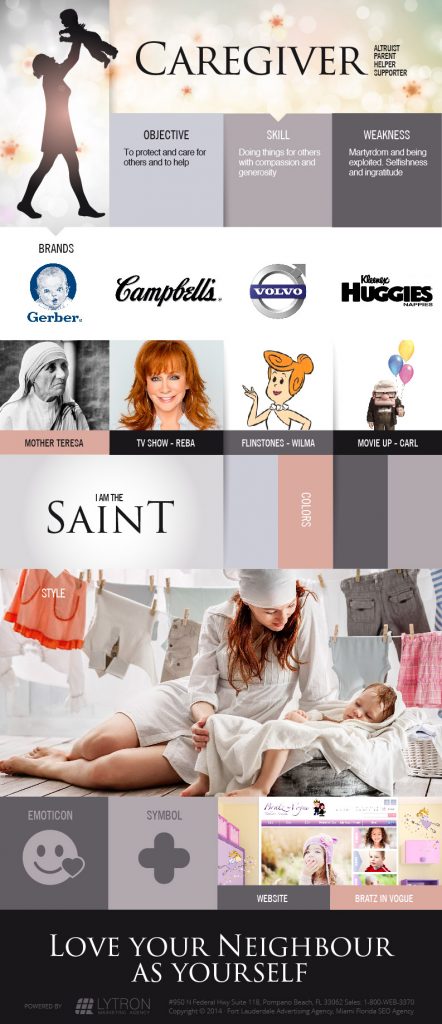Fort Lauderdale Web Design, Brand Development, Management, SEO and Digital Marketing Agency

Brand Archetypes
Strategic Framework
Brand personality is a mix of emotional characteristics linked to a company name. It shapes how people feel before making purchases decisions. Often a brand’s personality mirrors that of the target customer base. Emotions can exert a more powerful behavioral effect than purely rational decision-making.
FINDING YOUR VOICE
Finding your voice can be difficult. Identifying your brand archetype will save you time and money. Lytron will help you incorporate this FRAMEWORK on your brand message and marketing pieces.
It is a powerful thing when we are able to plug into the mind of others.
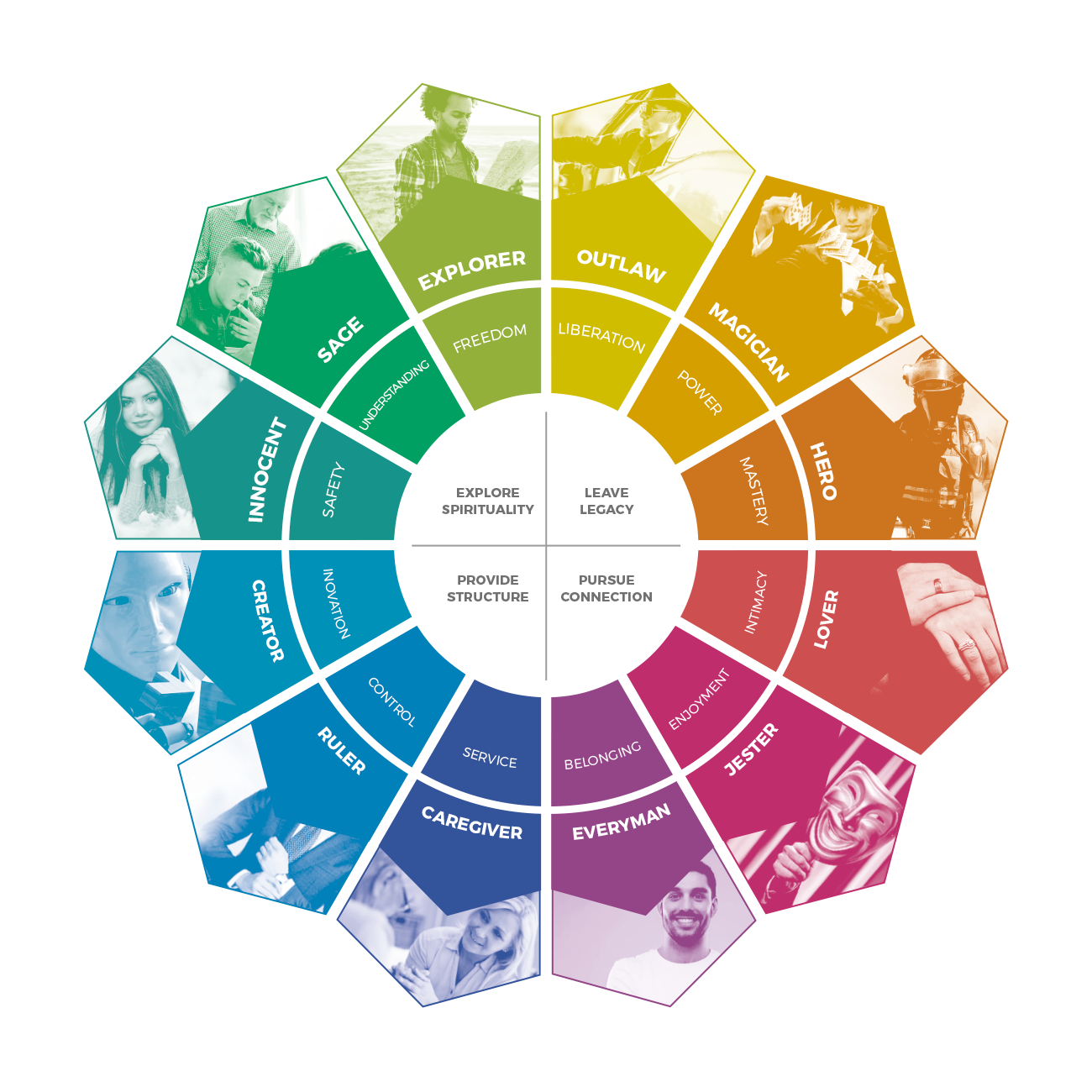
The 12 Brand Archetypes
There are 12 Brand Archetypes. They are divided into four general human needs. Each archetype represents a deeper need that branches out from the main one.
First introduced in 1919 and primarily used in the field of psychology, it became well established that collective unconscious is cross cultural.
Large brands have been applying the Brand Archetype concept for decades to define their identity, amplify their reach, and connect emotionally to their target audience by reaching out to their subconscious and addressing basic human needs. Usually the Brand Archetype concept is not known by digital agencies and small businesses. As Lytron is both branding and digital marketing agency, results focused, we use Brand Archetypes on our brand creation process and site development projects to increase conversion rate and ROI.
10 Steps Framework:
- Study your Ideal Client Personality, Needs, Desires and Main Characteristics
- Align it to an Archetype – What is your Client Main Archetype?
- Dive inside to learn what moves you. What is your Passion? Your Vision, Mission, Purpose?
- Define Your Own Brand Archetype
- Identify Characteristics in Common between your Client and Your Brand
- Study your Competition
- Find what is Unique between you and your competitors
- Create a powerful brand message using the archetypal tone of voice
- Project the message into a strong visual image that will resonate with customers
- Let your Ideal Client compare and choose you.
Brands who use this archetype might want to make their costumers feel safe and beautiful on the inside. Ex: Nintendo Wii, Coca-Cola, Dove
Brands that identify with this archetype tend to have a humanist side and want to help those who follow them. Ex: Google, BBC, Oprah
A brand that has chosen the Explorer as their archetype may offer their clients a chance to escape. Ex: Corona, Red Bull, REI
These brands tend to cater to misfits and/or people who like living on the edge. Ex: Virgin, Harley-Davidson, Diesel
They promise their customers to make their dreams come true by using their impressive skills. It is no wonder that many technology brands use this archetype. Ex: Apple, Absolute Vodka, Axe
Brands that shape themselves after the Hero sell themselves to their customers as the one who is going to rescue them from their woes. Ex: Snickers, Nike, Ariel, Printsome
A company that identifies itself with this archetype will most likely use suggestive imagery to evoke sensations. Ex: Häaguen-Dazs, Victoria Secret, Chanel
A marketing campaign designed for a Jester brand would probably be very funny or at least entertaining. Everyone loves to laugh, that’s why Jesters are some of the most beloved brands or at least have the most memorable ads. Ex: Pepsi, M&M’s, Old Spice, Budweiser
Brands who identify with the Everyman archetype relate to people on a “real” level. The Everyman marketing campaign usually evolves around everyday life activities and routines. Their message: It is perfectly fine to be normal. Ex: IKEA, Kit Kat, Visa
A Creator brand will empower its customers to use their creativity by selling them a world of possibilities. Ex: Lego, Adobe, Crayola
A brand that wants to “Rule them all” will have a narrative that demonstrates why they’re the leader of the industry. These type of brands will suggest to their customers that they can be rulers, too. Ex: Microsoft, British Airways, Mercedes-Benz
If the Ruler archetype is your boss then the Caregiver archetype is your parent. They empathise, want to help and protect their clients. Their message tends to be very positive. A Caregiver brand will exude an aura of selflessness. Ex: UNICEF, Johnson & Johnson, Heinz

As mentioned before, CEO & Business Managers do not make decisions based solely on logical / rational factors.
Regardless of culture, we have what we call the sixth sense, the gut feeling or intuition. Lytron’s role is to use emotional intelligence to understand its consumer and position its brand in order to promote identification between the two.
You create a good product / service and we connect you to your customer’s need.
Personalidade da marca
Sua marca tem transtorno de personalidade múltipla? Vamos ajudá-lo a ativar uma resposta emocional central (fazer com que se sintam seguros, que se sintam parte do grupo, etc.) para construir confiança e lealdade.
Estudamos e aprendemos o que motiva seus consumidores. Contamos com insights de dados, estudo de concorrência e análises, em vez de adivinhar cegamente. Depois de determinar o que os motiva, apresentamos um ponto de vista claro que atrairá aqueles que se encaixam perfeitamente na sua marca.
Sugerimos ser genuíno em todos os momentos para garantir que suas mensagens e interações estejam consistentemente alinhadas com a proposta de valor de sua marca.
Introduzido pela primeira vez em 1919 e usado primordialmente no campo da psicologia, ficou bem estabelecido que o inconsciente coletivo é transcultural.
Grandes marcas vêm aplicando o conceito Archetype há décadas para definir sua identidade, ampliar seu alcance e se conectar emocionalmente com seu público-alvo, alcançando suas necessidades humanas básicas e subconscientes. Normalmente, o conceito de Archetype não é conhecido por agências digitais e pequenas empresas. Como Lytron é uma agência de branding e marketing digital, focada em resultados, usamos a Archetypes em nosso processo de criação de marca e desenvolvimento de sites para aumentar a taxa de conversão e o ROI
Existem 12 arquétipos de marca. Eles são divididos em quatro necessidades humanas gerais. Cada arquétipo representa uma necessidade mais profunda que se ramifica a partir da principal.

